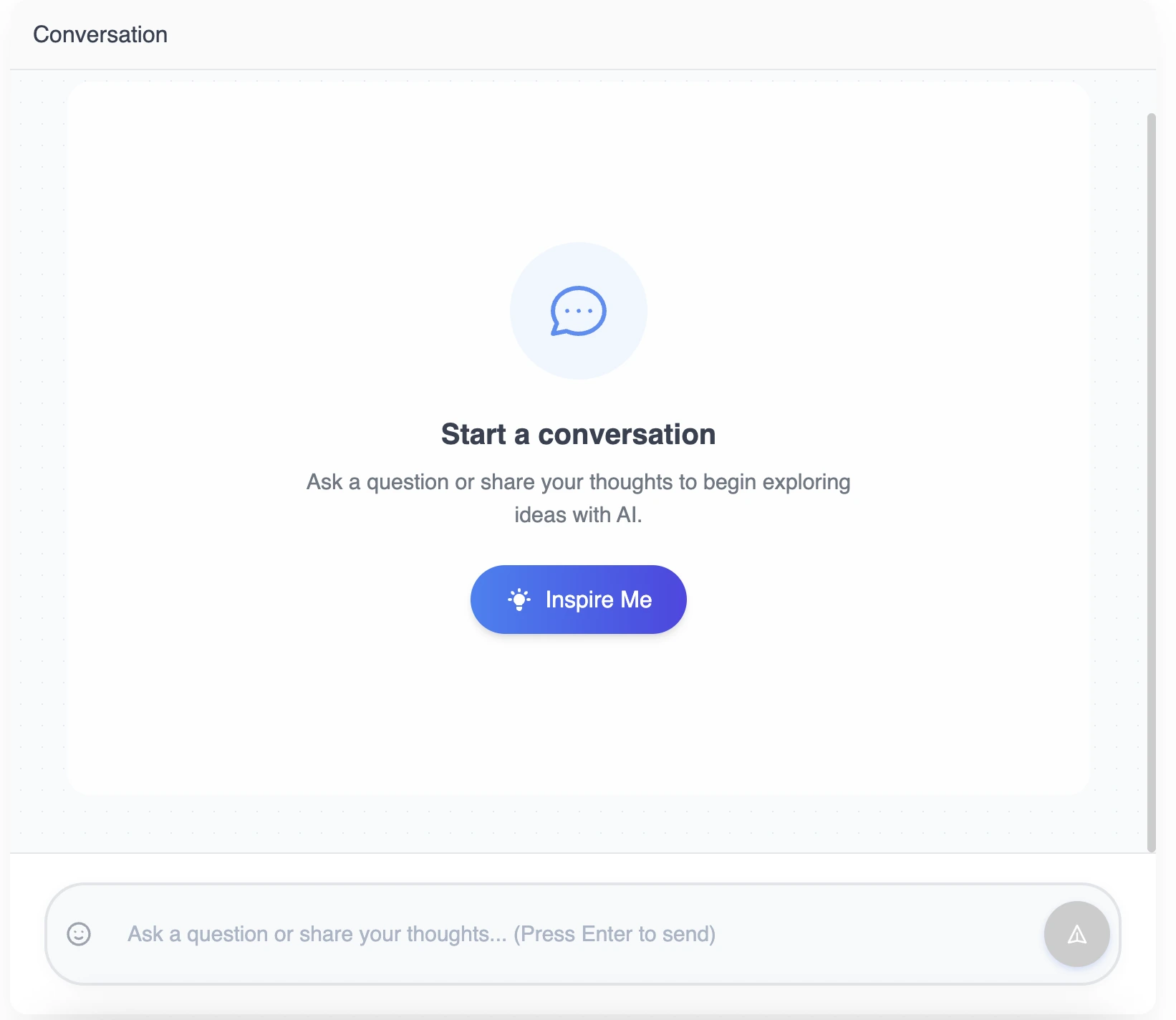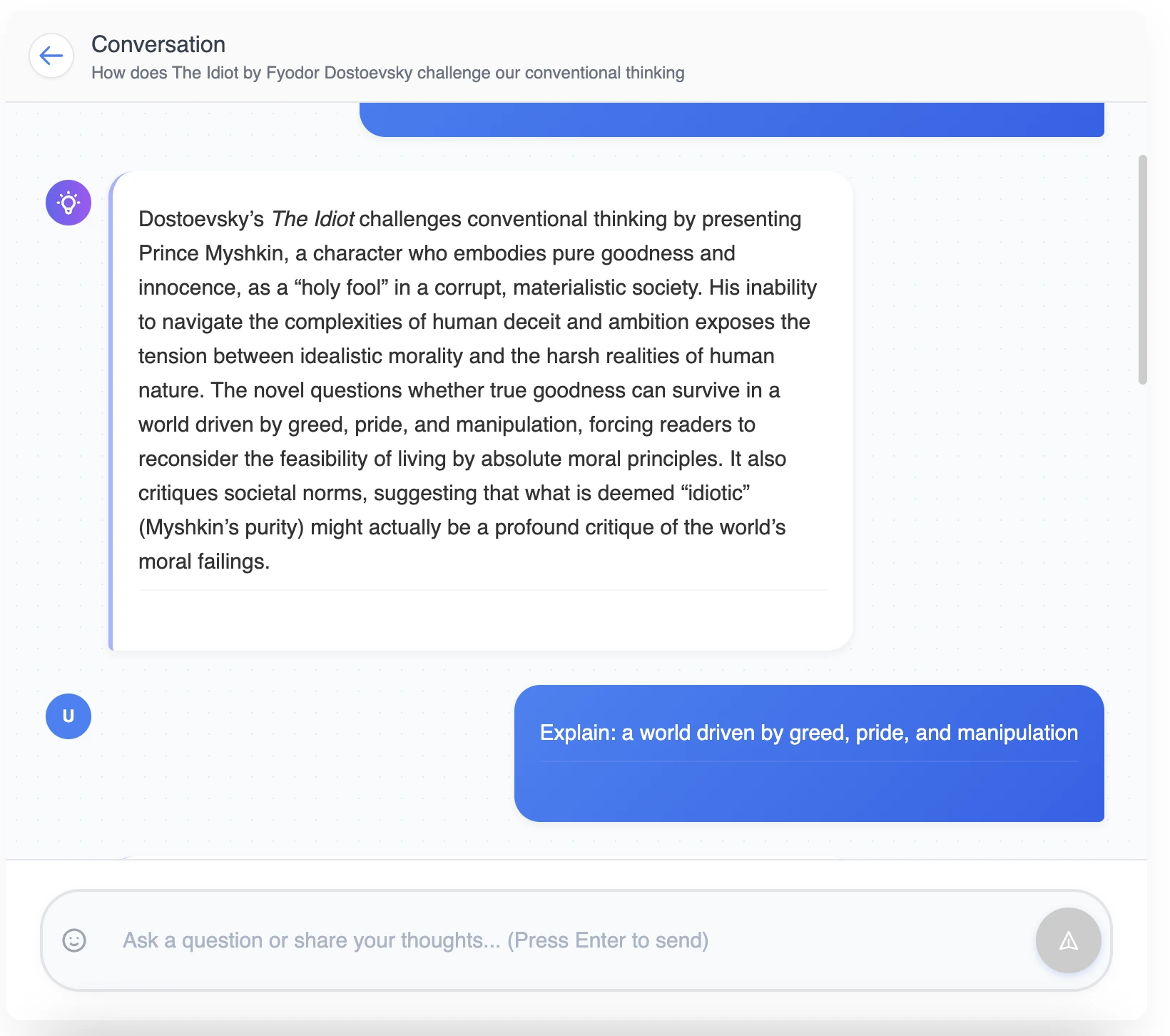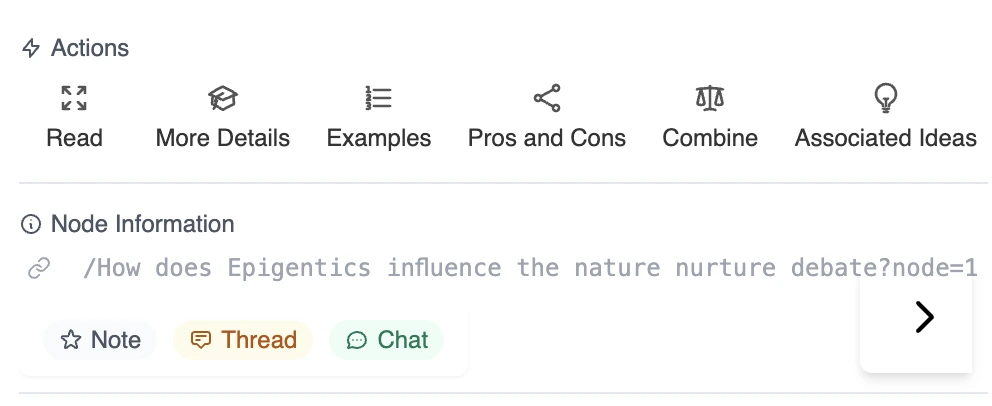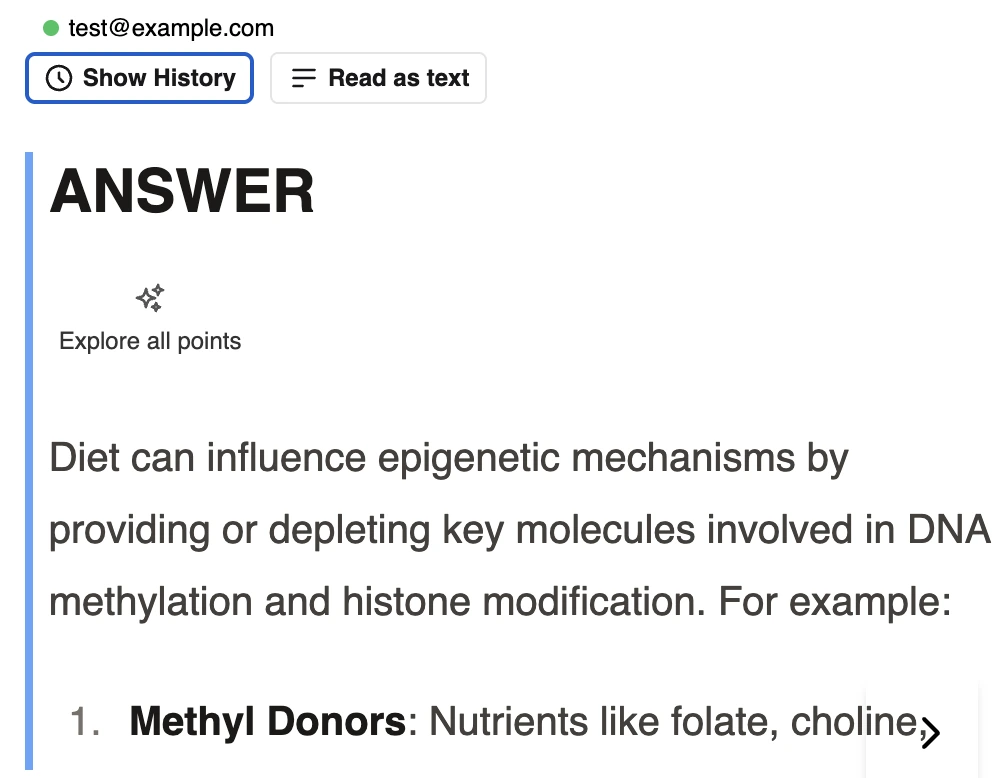We can't find the internet
Attempting to reconnect
Something went wrong!
Hang in there while we get back on track
How to Use MuDG
A powerful knowledge exploration tool that helps you navigate through complex topics, discover connections between ideas, and deepen your understanding through interactive conversation.
Guide for Researchers and Students
Step 1: Define Your Learning Objective
Begin by identifying what you want to learn about. MuDG works best when you start with:
- Topics: Historical periods, scientific concepts, philosophical movements
- Books: Literature, textbooks, research papers
- Ideas: Theories, methodologies, frameworks
- Questions: Research questions or concepts you're trying to understand
Step 2: Start the Conversation
Visit mudg.fly.dev/start/new/idea and enter your initial query in the search box.


Step 3: Navigate the Knowledge Graph
The interface is divided into several key areas:
Graph Visualization

The interactive graph shows connections between ideas. Nodes represent concepts, and edges show relationships.
Conversation Panel

Where you interact with MuDG, ask questions, and see responses.
Action Tools

Tools for combining nodes, exploring relationships, and managing your graph.
Responses

Zoom, pan, and focus controls for exploring your knowledge graph.
Interaction Options:
- Follow-up Questions: Dig deeper into specific aspects of the topic
- Define Terms: Request clear explanations of unfamiliar concepts
- Pros / Cons: Understand different perspectives on debates
- Combine Nodes: Select two concepts and ask MuDG to synthesize them
- Related Ideas: Discover adjacent concepts that enhance understanding
Step 4: Save and Share Your Research
- Download: Export your research as PDF or Markdown
- Share: Send your graph to colleagues to build upon your work
- Extend: Continue your research session later or allow others to contribute
Guide for Teachers
Creating Learning Experiences with MuDG
MuDG offers unique opportunities for creating guided learning experiences for your students. Here's how to use it effectively in your teaching:
Step 1: Create a Learning Path
- 1. Enter your topic or learning objective
- 2. Build out the knowledge graph through conversation
- 3. Navigate and expand the graph to cover key concepts
Step 2: Lock the Graph
- Use the "Lock Graph" feature to prevent unintended modifications
- This ensures students follow the learning path you've designed
- The locked graph will maintain all your curated connections
Step 3: Share with Students
- Generate a shareable URL for your graph
- Distribute this URL to your students
- Provide guided questions for exploration
Teaching Tips
Multiple Graphs
Create different graphs for various units or difficulty levels
Collaborative Learning
Use MuDG as a tool during class discussions
Student Presentations
Have students present their path explorations
Assessment
Compare student-created graphs for evaluation